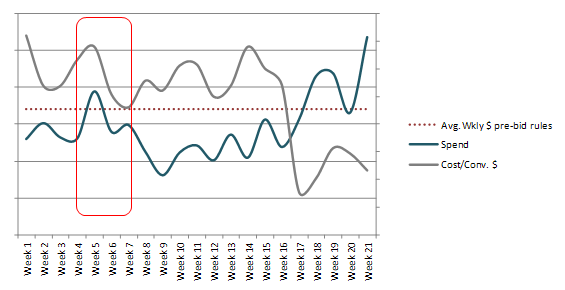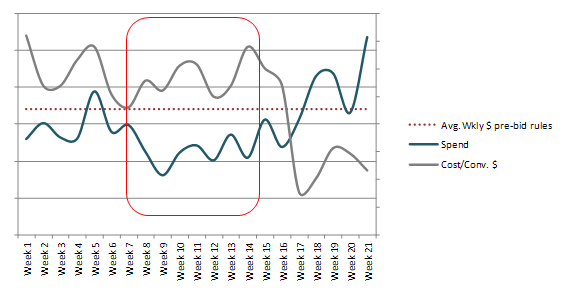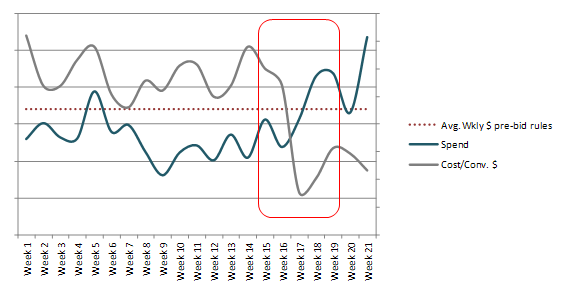Driving Maximum SEM Campaign Performance through Advanced Automation
Use of technology platforms like Marin, Kenshoo, and SearchCenter have become a ubiquitous aspect of search campaign management in the past 12-16 months. The benefits of these platforms are clear with tools streamlining bulk campaign changes, reporting, and bid management; all of which translates to more efficient workflow and back-end results for performance marketers.
That said these platforms are not stand-alone solutions; the human-element of search management continues to play a critical role in effective management of campaigns. Search specialist expertise ensures that the deeper, business context of decision-making is overlaid on the data-centric view of the technology platform.
A case study for AMP client, Blue Shield of California underscores this value ‘ the integrated approach of expertise and technology to amplify SEM success.
In this example, Blue Shield sought to scale the campaign to drive maximum lead volume at target Cost Per Lead (CPL) efficiency goals. The challenges facing this goal were two fold; 1) Identifying this volume/efficiency equilibrium; 2) Doing so in an extremely competitive bid landscape marked by rising Cost Per Click (CPC) rates. Being that the campaign was already manually optimized around CPL vs volume, automated bid rules were implemented within AMP’s SEM platform based on CPL goals. Immediately the campaign hit efficiency goals, but this came at the expense of conversion and click volume. Click volume alone dropped almost 10% in one week.
Campaign Performance: Implementation of Initial Bid Rule

Though the new CPL bid rules acquired volume at a CPL under goal, the volume was too small to hit overall volume goals. To solve for the restricted volume, AMP opened the CPL parameters to levels higher than goal in attempts to offset the first weeks dip in volume. Even when the allowable CPL was doubled, the SEM platform still defaulted to acquiring the most efficient leads regardless of volume.
Campaign Performance: Raising CPL Automated Goals

In light of this volume challenge, a solution needed to be applied in order to drive toward not only efficiency but maximum volume at efficiency. The SEM platform’s bid management solution needed to be supplemented by additional business rules. The platform alone was backing itself into a volume corner by optimizing strictly toward only the most efficient performing placements.
Mondays and Tuesdays were high opportunity days in terms of both search volume and lead activity. SEM platforms however tend to view all historical data as flat meaning, while they are exceptional at optimizing based on direct click to conversion data, they are not built to recognize non-standard variables such as seasonality, day of week and other industry specific market fluctuations. Low volume and performance data from Sunday was therefore inhibiting the campaign’s ability to capitalize on opportunity early in the week. The technology alone was not adapting for future opportunity, a new approach was needed.
To hit volume goals, the initial bid rules were re-set with two additional components, time of day (TOD) and bid to position.
As a result, AMP was able to increase lead volume by 78% and cut lead costs by 16%.
Campaign Performance: Multiple Bid Rule Approach

While the automated options that are available within the search engines and third party SEM platforms are crucial to keeping up with a rapidly changing environment, they are only as powerful as the expertise behind them. There are no ‘set it and forget it’ tools available, though with the appropriate specialists driving tactics there are a host of options to Solve just about any SEM challenge.



